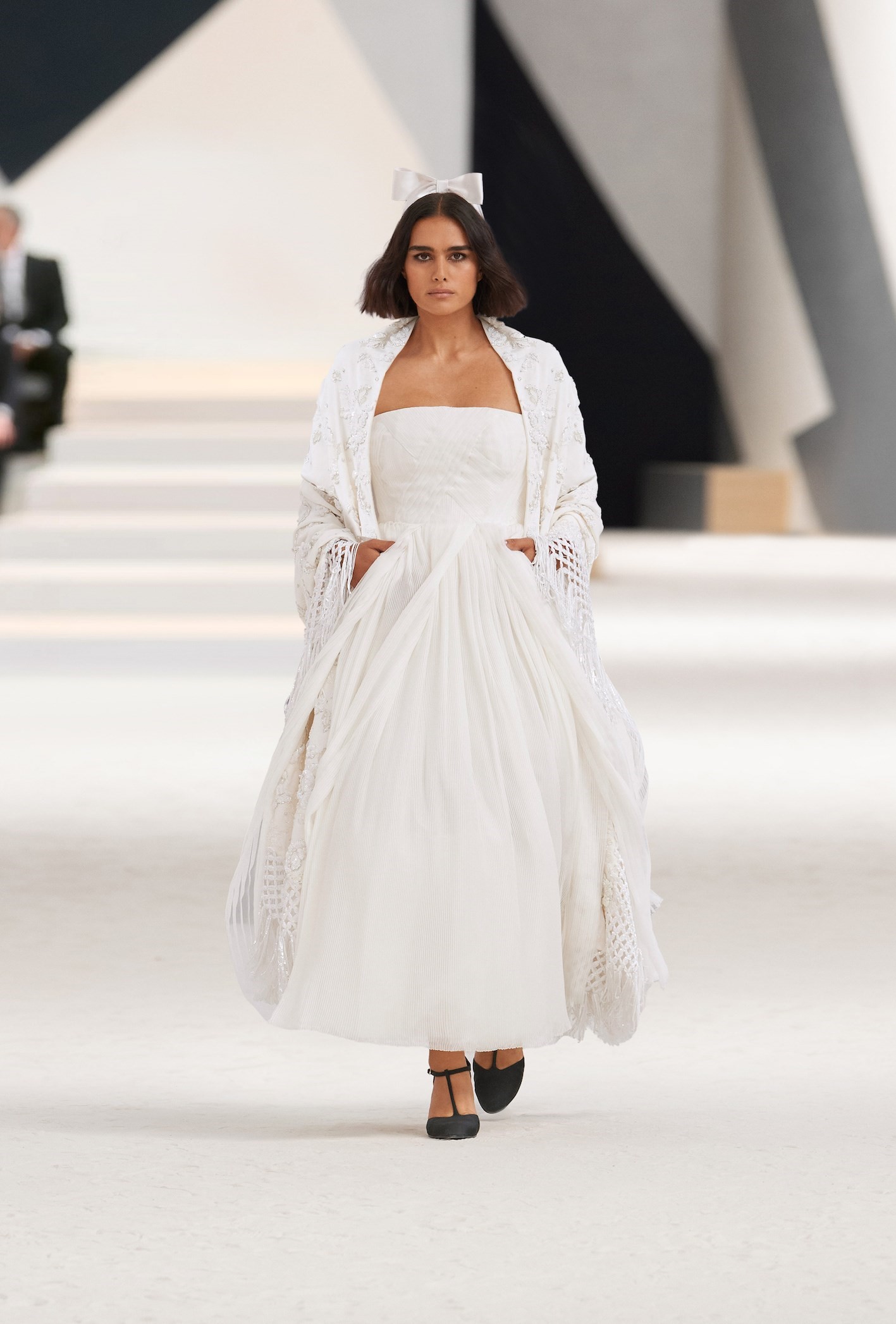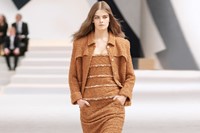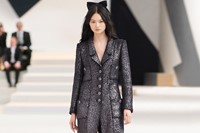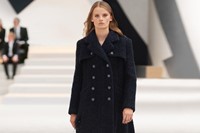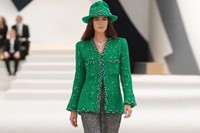Always but never the same – that was a pithy phrase Karl Lagerfeld once scribbled next to a sketch of a forthcoming Chanel collection, an indication of how he sought to continually reinvent within the house’s well-established codes. Virginie Viard, a veteran working at Lagerfeld’s right hand, knows those codes inside-out. And much in the same vein as Gabrielle Chanel herself, she seeks not revolution but evolution, a quiet shift of silhouettes and ideas from season to season.
Viard’s Autumn/Winter 2022 collection is, in her own words, a “continuity.” There is indeed a continuity between this and her last couture collection shown in January, the latest shown in a manège at the L’Etrier de Paris that underscores an equestrian theme evident in that last show, where Charlotte Casiraghi galloped on horseback like an avatar of a young Coco. And Chanel herself was all about continuity: her iconic suits, first introduced in the 1910s but honed to a machinelike efficiency of cut and proportion in the Fifties, became a uniform of modern women precisely because, unlike the ever-changing hemlines and silhouettes of collections of her contemporaries like Dior, they had a consistency, an eternal quality. They were about style, not fashion.
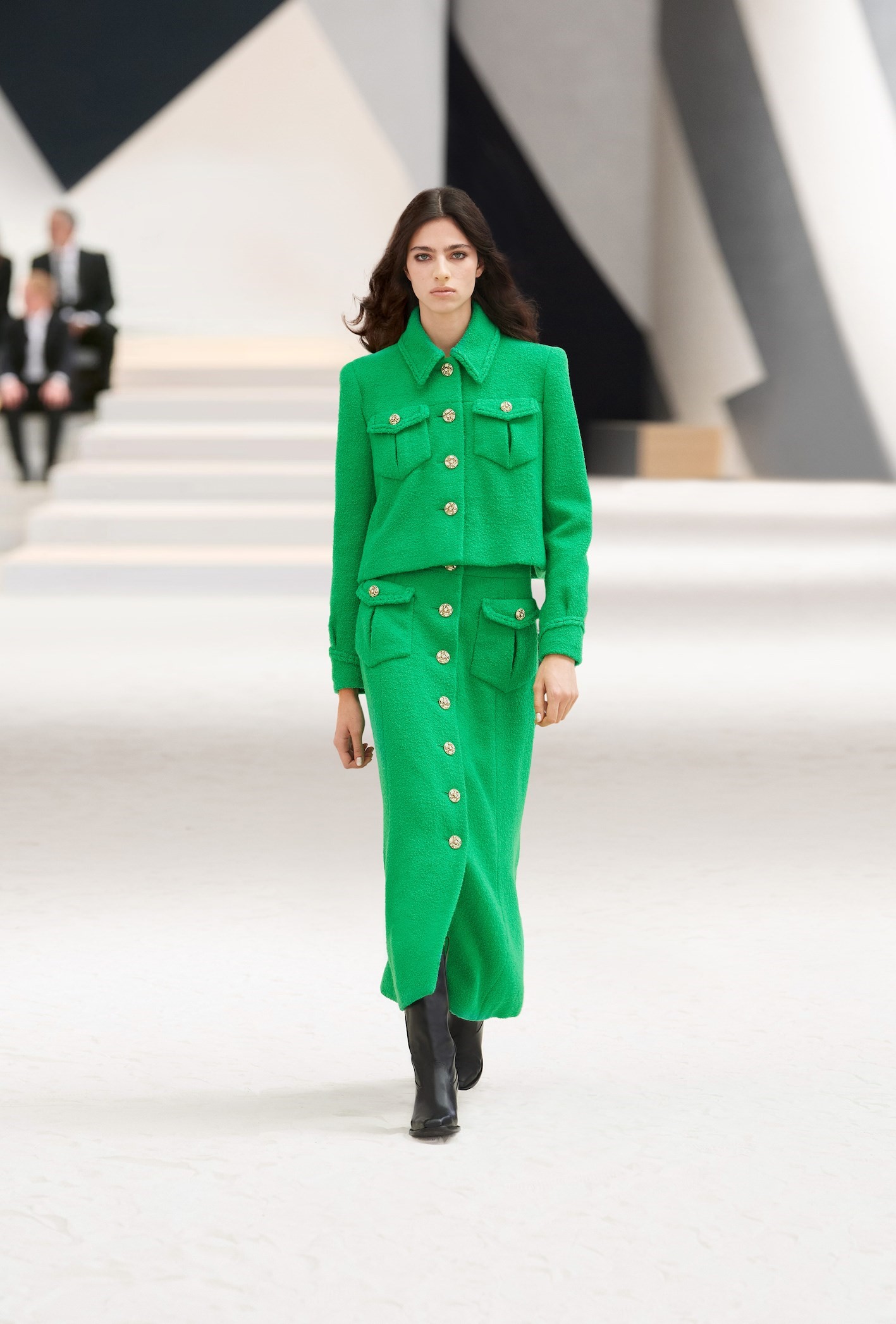
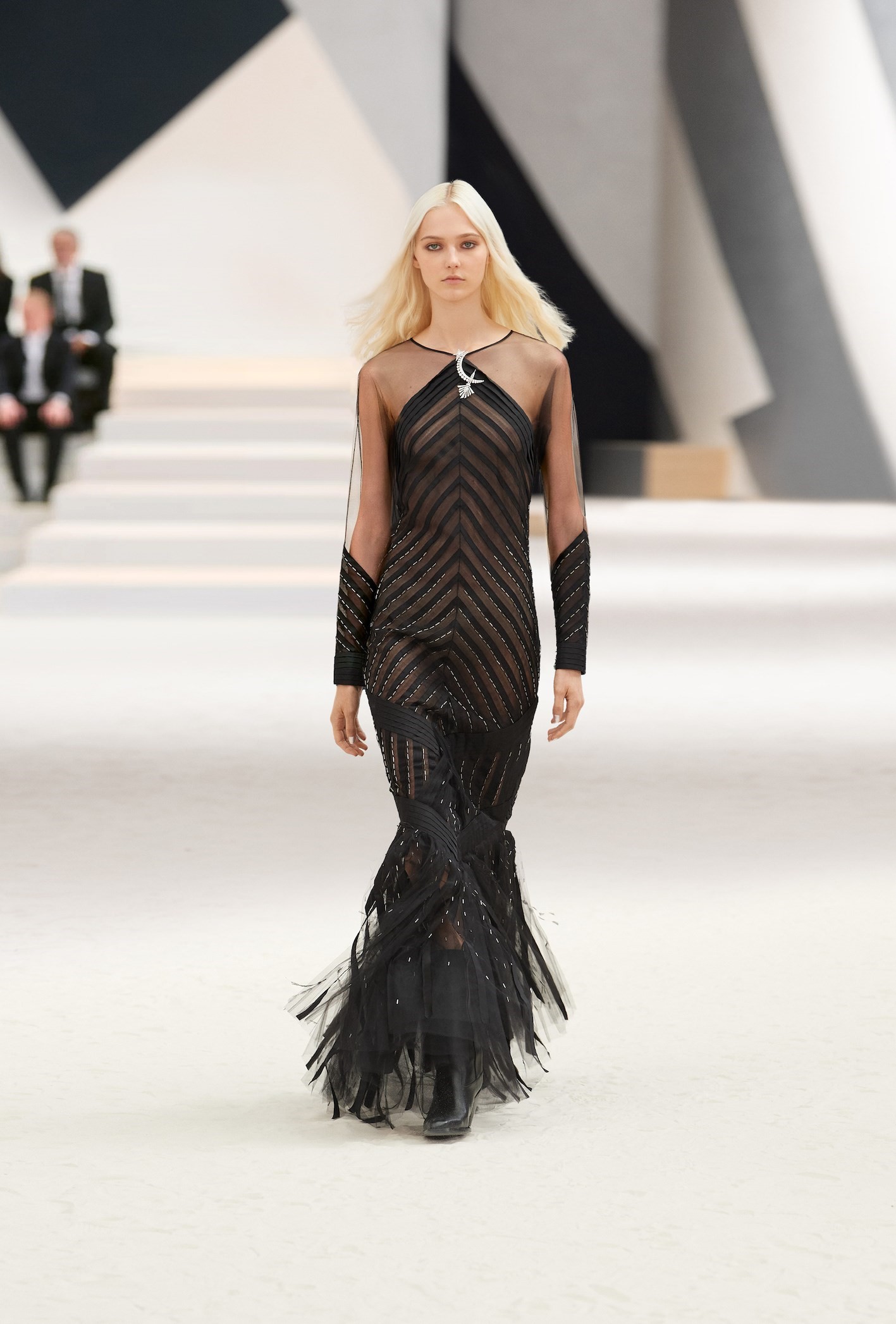
There is also a thread that weaves Viard’s Chanel to Lagerfeld’s. His first collection for the house, in 1983, took Chanel’s work in the 1930s as inspiration – the least Chanel of Chanel, where rather than 20s little black dresses or 50s suits, Chanel experimented with romantic lace gowns, vibrant prints of feather and flowers, and even extravagant historicism. The same period inspires Viard, who creates elongated languid gowns and suits with tugged-down skirts, and an homage to Chanel’s ‘Bijoux de Diamants’ collection of 1932. That was remarkable: a collection of diamonds set into platinum, Gabrielle Chanel’s only foray into fine jewellery, it debuted at the height – or, rather, in the very depths – of the Depression, counterintuitive brilliance that made women dream. Here, the elements are translated to clasps and details on dresses of dreamy gossamer chiffon.
The equestrian theme results in fuller trousers that wink at jodhpurs, at boots that resemble those worn to ride, in wide-brimmed hats – feminine capelines, but also tipping their cap to stetsons. Horsewomen come from all countries of the world, after all. And elongated coats sketched the line of elegant riding habits of the past. It isn’t a romantic Lady Godiva on horseback that Viard looks to, but the real image of Chanel herself gallops around British estates alongside her lover the Duke of Westminster. “Clothes remain light, feminine, designed to be worn,” Viard states. “I can’t see myself doing it any other way.” And indeed, given that haute couture is often seen as a surrender to fantasy, this focus on the actuality of the craft is striking – and underscores the fact that Chanel, then and now, has always been about dressing women for life.
